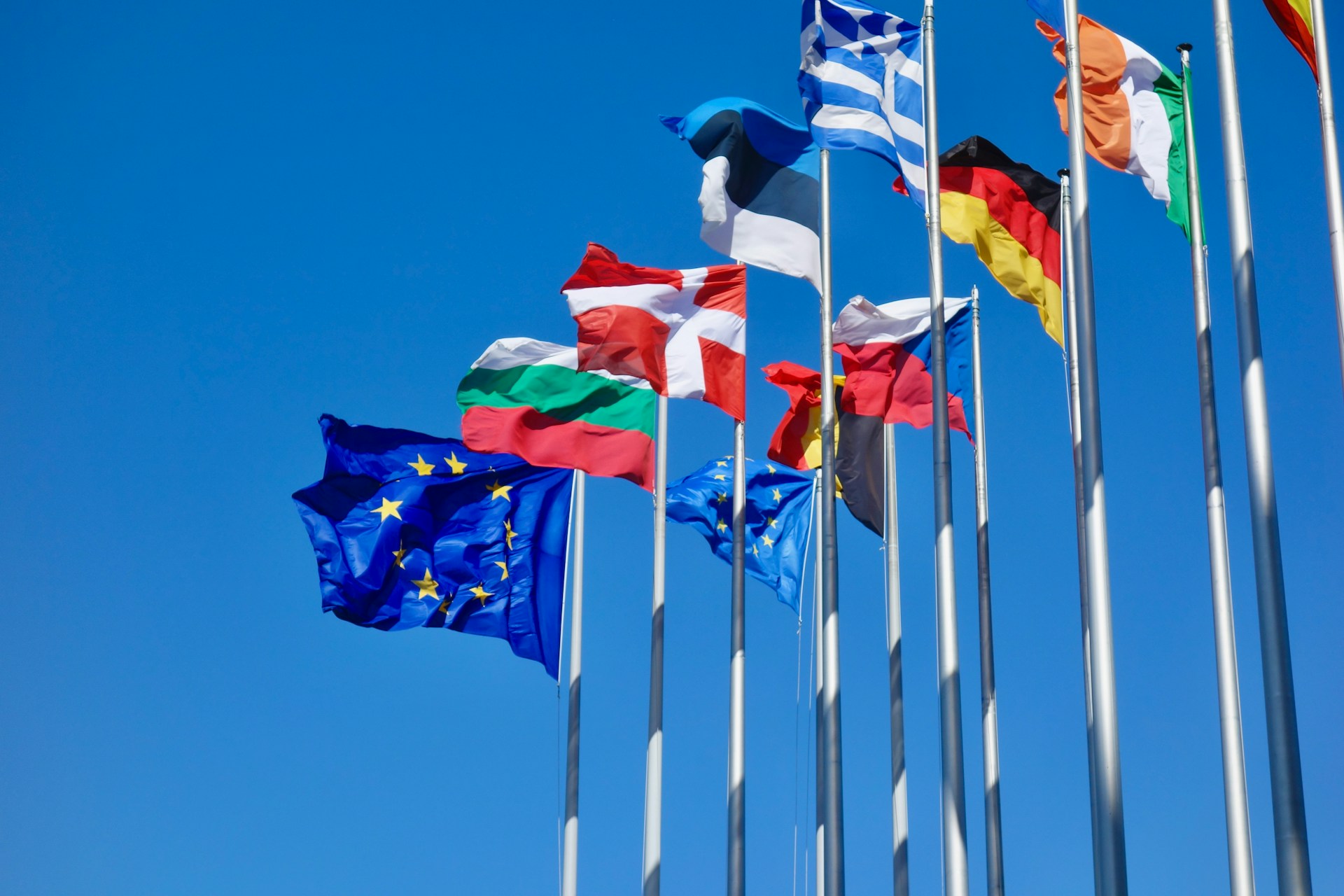Canada News
Prepare for an EU that’s less open to trade

The EU’s 2021 trade policy review responded with an explicit shift in strategy. (File Photo: Antoine Schibler/Unsplash)
At a time when uncertainty already hangs over the international economy, Canada’s relations with one of its most important trading partners are at risk of becoming increasingly complicated.
Like Canada, the European Union presents itself as a reliable defender of trade openness and a rules-based trading system. This confluence of shared values and interests has made the EU into Canada’s second-largest trade partner, with more that $180 billion in bilateral trade in 2023.
This trade includes imports Canadians rely on and enjoy, from German cars to French cheese. In turn, exports to the EU are important to a broad range of Canadian industries, such as mining, pharmaceuticals and agriculture.
But recent developments in European trade policy have meant that the EU’s commitment to the open-trade agenda has become increasingly qualified and contested.
New EU barriers on the horizon
One impactful change has been the geopolitical turn in trade policy that can be observed worldwide. It was triggered by the COVID-19 pandemic, China’s aggressive trade posture and Russia’s invasion of Ukraine.
For the EU specifically, these events underscored concerns about safeguarding supply chains, reducing trade dependencies especially with respect to energy and raw materials and protecting the European economy against coercive tactics and unfair competition.
The EU’s 2021 trade policy review responded with an explicit shift in strategy. While the EU’s revised trade strategy still emphasizes a commitment to openness, it adds two further guiding principles: sustainability and assertiveness. Combined, these three principles define what the EU calls “open strategic autonomy,” its new trade-policy framework.
In practice, sustainability and assertiveness tend to mean less rather than more trade openness.
Sustainability reflects the emissions targets of the European Green Deal while seeking to ensure that these measures do not turn into a competitive disadvantage. Assertiveness is about protecting a level playing field for European businesses, as well as addressing trade-related security concerns, for instance with respect to technology sharing or intellectual property.
These new strategic orientations have been described as a “unilateral turn” in EU trade policy. Some examples include:
- The Carbon Border Adjustment Mechanism and the Deforestation Regulation, which are motivated by sustainability.
- The Foreign Subsidies Regulation and the International Procurement Instrument, which aim at responding to unfair competition.
- The Anti-Coercion Instrument and the FDI Screening Framework, which serve the EU’s security interests.
Additional measures of this kind, such as new restrictions on outbound investment, are under consideration.
Political opposition to trade agreements
Further changes in EU trade policy have been driven by civil-society mobilization and electoral dynamics. Public contestation of EU trade policy increased dramatically around 2015, when the Transatlantic Trade and Investment Partnership (TTIP) with the United States and the Comprehensive Economic and Trade Agreement (CETA) with Canada were debated.
Once the TTIP was abandoned, challenges temporarily subsided. But opposition has reemerged over the past year in the context of farmers’ protests in several EU member states.
More recently, the rejection of EU trade agreements has become a central component of far-right movements, which claim that trade undermines national sovereignty and identity. Following recent elections, opponents of trade liberalization now outnumber its advocates in several member states.
This puts key parts of the European Commission’s trade agenda at risk.
In principle, EU trade policy is decided in Brussels, not in the national capitals. But in practice, decisions such as the adoption of new bilateral agreements will not occur over the objection of important member states. This is why the EU-Mercosur Trade Agreement, which was agreed to in 2019 but faces stiff opposition especially from France, looks unlikely to come into force.
Likewise, the temporary suspension of import duties and quotas on goods from Ukraine, unpopular in Poland and other Eastern European member states, was extended only after new safeguard measures for agricultural products had been added.
Contingency plan needed
The new realities in EU trade policy impact Canada.
In the short term, the CETA agreement, which has been provisionally applied since 2017, must be ratified by all EU member states. This requires separate votes in their parliaments. Seventeen member states have completed the ratification process, but the likelihood that CETA will fail to pass in at least one of the 10 remaining member states has increased in recent months.
France is the most prominent example.
In the National Assembly, parties that campaigned against CETA now hold a majority of seats. It is not certain if a vote will be held on CETA any time soon, and whether a negative vote would automatically put an end to provisional application.
But there is a realistic risk that CETA fails, and the Canadian government must make contingency plans for this scenario. These may include negotiations with the EU on a revised agreement that does not include provisions that fall under member-state competency, and therefore would not require ratification.
In the longer term, Canada must be ready for a more protectionist EU. This could be further exacerbated if Donald Trump is returned to the White House.
Overcoming Canada’s trade complacency
CETA and procurement: opening an open market?
Countering China’s economic coercion by building on a European initiative
During the first Trump administration, the EU – like Canada – invested political capital in defending the multilateral trade order, for instance by promoting reforms to the World Trade Organization (WTO) and setting up the Multi-Party Interim Appeal-Arbitration Arrangement (MPIA).
A second Trump presidency would trigger louder calls from within the EU to counter his “America First” philosophy with a “Fortress Europe” approach.
Canada must also be prepared to stickhandle growing trade irritants emerging from some of the EU’s autonomous measures. Canadian diplomats have raised concerns about the Deforestation Regulation, which will require proof that cattle or products such as lumber are “deforestation-free.”
An even larger dispute could by triggered by the Carbon Border Adjustment Mechanism (CBAM), which will come fully into force in January 2026. As long as Canada maintains a carbon-pricing regime considered equivalent to EU rules, its primary effect will be additional administrative requirements for exporters.
But if a future federal government repeals Canada’s carbon tax, as the Conservative Party has promised, the CBAM would apply with full force. This would mean additional costs imposed on Canadian exports of iron and steel, cement, fertilizer, aluminum, electricity and hydrogen.
In terms of leverage, policymakers must grapple with the fact that the EU does not regard Canada as an overwhelmingly important trading partner. Therefore, to protect its interests, Canada must effectively articulate what makes it a valuable economic and political ally.
In addition to using ideas- and information-based resources to elevate its status on the global trade scene, this means showcasing achievements thanks to CETA. Looking ahead, it also means ensuring that forward-looking bilateral initiatives such as the Strategic Partnership on Raw Materials yield tangible benefits.
Canada cannot afford to approach relations with its second-largest trade partner on autopilot. Fostering the critical relationship with the EU at a time of significant geopolitical evolution calls for a concerted effort to demonstrate the benefits of doing business with Canada.
This article is part of the Trade in an Era of Global Insecurity special feature series.
JOIN POLICY OPTIONS AND SEVERAL AUTHORS OF THIS SERIES FOR AN ONLINE DISCUSSION ON TRADE IN THIS ERA OF GROWING GLOBAL SECURITY CONCERNS SEPT. 16, AT NOON ET.
Click here to register.
This article first appeared on Policy Options and is republished here under a Creative Commons license.





















